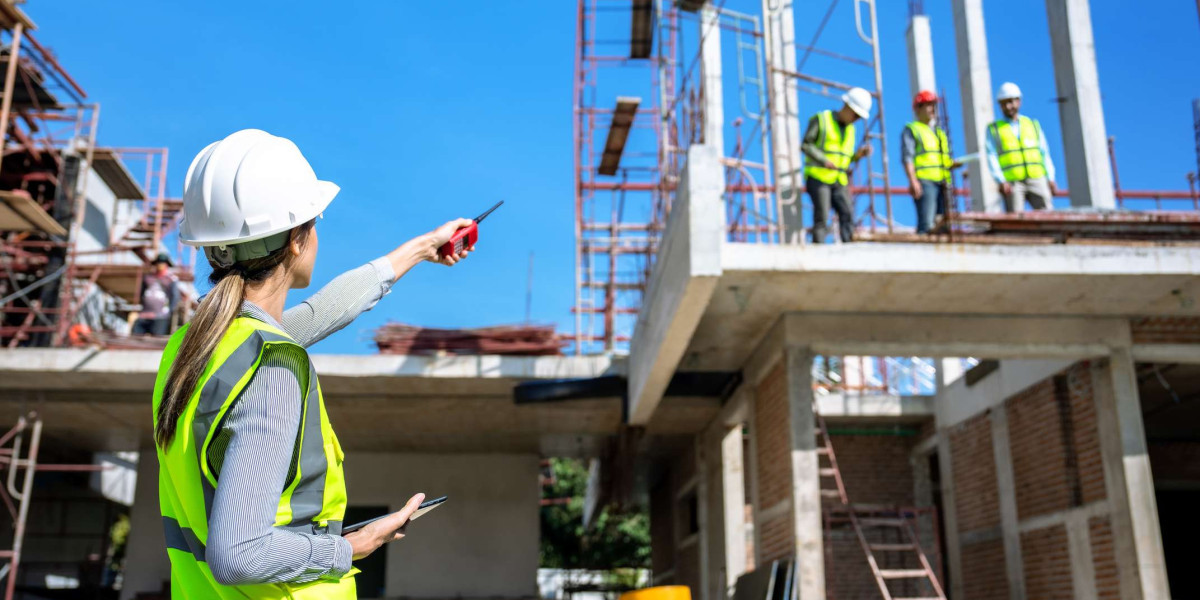In today’s fast-paced construction and industrial environments, maintaining strict site access control standards is more than a regulatory requirement — it’s a foundation of operational safety and efficiency. Contractors, who often make up the majority of a site’s workforce, play a vital role in this process. Whether it’s ensuring that only authorized personnel enter restricted areas or verifying the proper use of identification systems, contractors’ involvement in access control directly influences workplace safety outcomes. For those pursuing an IOSH Course online, understanding this dynamic can help them develop the practical insights needed to manage and oversee such safety systems effectively.
Understanding Site Access Control in Modern Workplaces
Site access control refers to the methods, systems, and protocols used to regulate who can enter, move within, and exit a worksite. It’s a central element of safety management, especially in high-risk sectors like construction, manufacturing, oil and gas, and logistics.
Effective site access control ensures that:
Only authorized personnel enter sensitive or hazardous zones.
Visitors and temporary staff are accounted for at all times.
Emergency evacuations are organized and efficient.
Security breaches, thefts, and unauthorized activities are minimized.
Contractors, subcontractors, and site managers must coordinate to maintain these standards while ensuring smooth daily operations.
Why Contractors Hold a Central Role
Contractors are not just workforce suppliers; they’re active participants in maintaining safety culture. Their responsibilities extend far beyond completing assigned tasks — they must align with the site’s security and safety protocols, especially in multi-contractor environments.
1. Gatekeeping and Personnel Verification
Contractors are often the first to interact with site entry systems. They must ensure that all their employees carry proper identification, safety training certificates, and work permits. In many cases, digital access systems such as RFID cards or biometric scanners are used, requiring strict compliance with site-specific access levels.
Example: On a large construction site, a subcontractor managing electrical work might need to verify that only certified electricians can access areas with high-voltage systems. Any lapse could result in severe safety incidents or operational delays.
2. Compliance with Legal and Organizational Requirements
Each worksite operates under national safety regulations, company standards, and client-specific requirements. Contractors must ensure their workers adhere to all these layers of compliance, from background checks to safety inductions.
For instance, in countries like the UK or the UAE, contractors are legally responsible for ensuring their employees have completed recognized safety certifications such as IOSH Managing Safely or NEBOSH IGC before accessing specific zones.
3. Data and Record Management
Modern safety management systems rely on accurate recordkeeping. Contractors are responsible for maintaining access logs, attendance reports, and safety briefings for their teams. Digital tools help track who is on-site, how long they’ve been there, and what permissions they hold — essential during audits or emergency evacuations.
4. Supporting Safety Culture Through Training
Access control isn’t just about barriers and gates; it’s about mindset. Contractors who invest in safety training empower their workforce to act responsibly and follow protocols without constant supervision.
Those familiar with training from an IOSH Course online know that access control contributes to hazard prevention, security enhancement, and overall site integrity.
Core Principles of Contractor-Led Access Control
To maintain consistent and reliable site access control, contractors should build their approach around several key principles:
1. Authorization and Identification
Every worker and visitor should carry a valid ID card or badge linked to a verified database. Contractors must update these records regularly to ensure expired credentials are deactivated promptly.
2. Induction and Orientation
No individual should enter a worksite without attending a safety induction. This session introduces site rules, access restrictions, and emergency protocols. Contractors are often tasked with conducting or supporting these briefings.
3. Coordination and Communication
When multiple contractors operate simultaneously, miscommunication can lead to confusion or even accidents. Regular coordination meetings and shared access plans help maintain order.
4. Monitoring and Reporting
Routine checks and surprise inspections help verify compliance. Contractors should also encourage workers to report access violations or suspicious activity immediately.
How Contractors Support Emergency Preparedness
One of the most critical reasons for maintaining accurate access control is emergency management. In case of fire, gas leaks, or structural failure, knowing who is on-site — and where they are — can save lives. Contractors play a central role by ensuring their workforce logs in and out properly and by supporting emergency roll calls.
For example, on a refinery site, if a fire alarm sounds, access control data can help safety officers confirm whether all personnel have evacuated. Contractors must ensure their teams follow evacuation routes and participate in drills regularly.
Integrating Technology in Access Control Systems
Today, digital transformation is reshaping how contractors handle site safety. Technologies like facial recognition, smart ID cards, and mobile-based check-in systems make access control more accurate and transparent.
Smart Access Solutions
RFID and NFC Badges: Simplify entry and exit tracking.
Biometric Scanners: Add a layer of identity verification, preventing badge misuse.
Cloud-Based Monitoring: Allows real-time access tracking from remote locations.
Benefits of Digital Integration
Instant updates during emergencies.
Reduced paperwork and administrative load.
Enhanced accountability and transparency among contractors.
However, technology alone cannot replace vigilance. Proper training and human oversight remain essential.
The Connection Between Access Control and Overall Safety Performance
Access control systems are directly tied to the broader safety management framework. When contractors manage site entry effectively, they reduce the risk of:
Unauthorized workers performing hazardous tasks.
Theft or sabotage of valuable equipment.
Overcrowding or unsafe occupancy levels.
Moreover, clear access records support investigations, audits, and incident reviews, enabling organizations to learn and improve safety practices continuously.
Building Accountability Through Collaboration
True safety success depends on collaboration between site owners, contractors, and workers. Contractors should establish open communication channels with safety managers and provide timely feedback about access-related challenges.
Best practices include:
Regular joint inspections.
Shared access databases.
Clear role definitions for gate security and safety teams.
Routine refresher training to ensure everyone understands updates to access policies.
When everyone takes ownership of their role, maintaining site access control becomes a seamless part of the daily workflow rather than an administrative burden.
How IOSH Training Strengthens Contractor Competence
Contractors who pursue professional safety qualifications develop the skills to manage complex safety systems effectively. An IOSH global safety qualification is recognized worldwide and equips learners with a strong understanding of workplace risk management, including access control principles.
These training programs teach participants how to:
Identify vulnerabilities in site entry systems.
Establish secure access procedures for multi-contractor sites.
Coordinate safety communication between workers and management.
Ensure compliance with global safety standards.
For contractors aiming to work on international projects, earning a globally recognized qualification like IOSH can significantly enhance career growth and credibility.
FAQs About Contractors and Site Access Control
1. Why is access control so important in construction?
It ensures that only trained and authorized personnel enter hazardous zones, reducing accidents and improving accountability.
2. How can contractors improve access control on-site?
They can implement ID verification, conduct regular inductions, and use digital access tracking tools to maintain accurate records.
3. What are common mistakes contractors make in access control?
Failing to update records, ignoring expired IDs, or not verifying subcontractor credentials are frequent issues.
4. Does training help contractors maintain better site security?
Absolutely. Training like the IOSH Course online equips contractors with practical skills to plan, monitor, and enforce safety and security standards effectively.
5. How often should access control systems be reviewed?
Ideally, systems should be reviewed quarterly or after major site changes to ensure alignment with current safety requirements.
Conclusion
Contractors play an indispensable role in maintaining effective site access control standards. Their involvement goes beyond routine verification — it shapes the safety culture, operational efficiency, and emergency readiness of the entire site. By integrating proper training, technology, and collaboration, contractors can ensure that every entry point supports safety, not risk.
For those seeking to enhance their competence, pursuing an IOSH global safety qualification can be a powerful step toward building professional credibility and mastering real-world safety management. Ultimately, safe access control begins with informed and responsible contractors — the true gatekeepers of every secure worksite.








